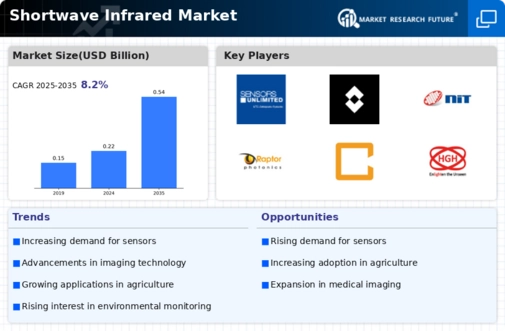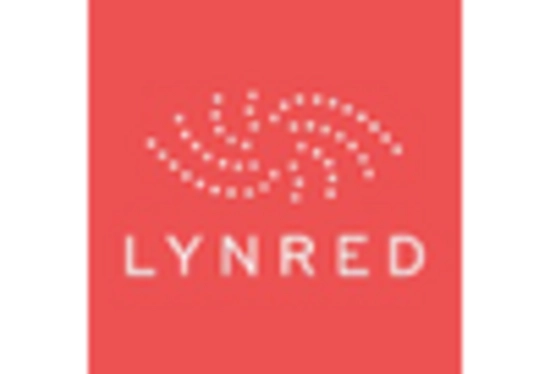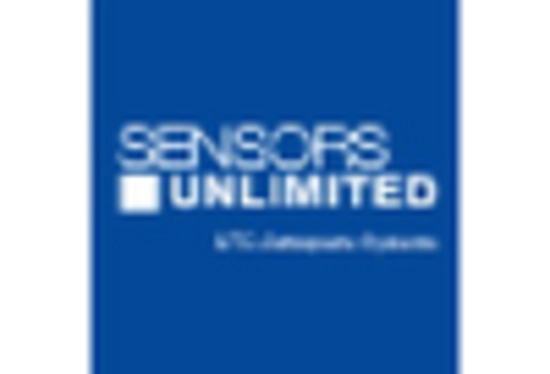Market Trends
Key Emerging Trends in the Shortwave Infrared Market
The Shortwave Infrared (SWIR) market is experiencing several noteworthy trends that are shaping its trajectory and influencing industry dynamics. One prominent trend is the increasing adoption of SWIR technology in diverse applications across various industries. In healthcare, SWIR imaging is gaining traction for medical diagnostics, providing enhanced visualization capabilities for procedures like endoscopy. Similarly, in manufacturing, SWIR sensors are being utilized for quality control and inspection processes, contributing to improved production efficiency.
The demand for compact and lightweight SWIR sensors is another prevailing trend. As industries seek more portable and versatile solutions, manufacturers are focusing on developing compact SWIR sensors without compromising performance. This trend is particularly evident in defense and surveillance applications, where lightweight and easily deployable SWIR sensors enhance operational flexibility and efficiency.
Integration of SWIR technology with other imaging technologies is on the rise. Combining SWIR with visible or thermal imaging allows for comprehensive and multi-modal imaging solutions. This integration is valuable in applications like security and surveillance, where a holistic view of the environment is essential. The trend towards integrated solutions underscores the industry's focus on providing versatile and comprehensive imaging capabilities.
Continuous advancements in SWIR sensor technology are contributing to improved performance and affordability. The development of low-cost SWIR sensors is making the technology more accessible to a broader range of industries. This trend is particularly beneficial for small and medium-sized enterprises that may have budget constraints but still seek to leverage the advantages of SWIR technology in their operations.
The agriculture sector is witnessing a growing trend of adopting SWIR technology for precision farming. SWIR sensors assist in monitoring crop health, optimizing irrigation, and assessing soil conditions. As agriculture becomes more technologically advanced, the integration of SWIR sensors is helping farmers make data-driven decisions, leading to increased efficiency and sustainability in crop management.
Automation and artificial intelligence (AI) are playing a crucial role in the utilization of SWIR technology. Automated processes, coupled with AI algorithms, enable real-time analysis of SWIR imaging data. This trend is particularly relevant in manufacturing, where automated quality control processes using SWIR sensors contribute to faster and more accurate defect detection, ensuring product quality.
Environmental monitoring and sustainability applications are emerging as significant trends in the SWIR market. SWIR technology's capability to assess vegetation health, monitor water quality, and detect environmental changes aligns with the growing emphasis on sustainability and ecological conservation. As environmental concerns gain prominence, the demand for SWIR sensors in applications related to climate change and natural resource management is likely to increase.
The rise of hyperspectral imaging using SWIR sensors is transforming various industries. Hyperspectral imaging captures a wide range of spectral bands, allowing for detailed analysis and identification of materials. This trend is prominent in sectors such as food and agriculture, where hyperspectral imaging using SWIR sensors aids in quality control and authenticity verification.
The market is also witnessing increased collaboration and partnerships among industry players. Collaborative efforts between sensor manufacturers, software developers, and end-users aim to create comprehensive and integrated SWIR solutions. These partnerships contribute to the development of innovative products and enhance the overall value proposition for customers.
















Leave a Comment